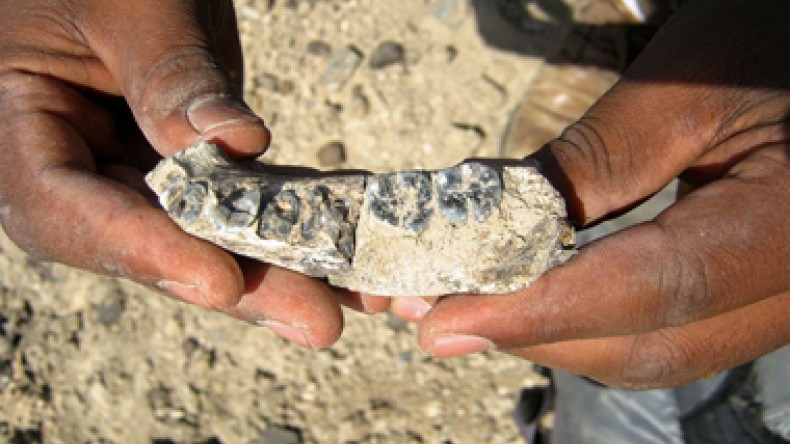
Oldest known jawbone from human genus found in Ethiopia
With the discovery of a gray, fossilized jawbone in a remote corner of Ethiopia, a student at Arizona State University may have changed our understanding of our earliest ancestors, CNN reported.
The partial lower jaw is the oldest known fossil evidence of the genus Homo, to which modern day humans belong, according to a study published Wednesday in the journal Science.
The jawbone has been dated to 2.8 million years ago -- which predates the previously known fossils of the Homo lineage by approximately 400,000 years, according to Arizona State University.
Chalachew Seyoum, a graduate student from Ethiopia, came across the fossil -- the left side of a lower jaw with five teeth -- while on a field expedition in the Afar region of eastern Ethiopia in 2013.
"Honestly, it was an exciting moment," Seyoum said, according to a news release from the university.
"I had good experience in field surveying and knew where potential sediments are. I climbed up a little plateau and found this specimen right on the edge of the hill."
The age of the fossil means it could help fill in an important gap in our knowledge.
It also means the Homo genus could have evolved nearly half a million years earlier than previously thought.
Researchers have previously found fossil remains dating back 3 million years or more, such as the skeleton of "Lucy," the famous 3.2 million-year-old remains of the species Australopithecus afarensis. Those remains were found in 1974 not far from the site of the latest discovery.
Scientists have also found fossils that are 2.3 million years old and younger, which are in the genus Homo and are closer to modern day humans.
Newsfeed
Videos






























